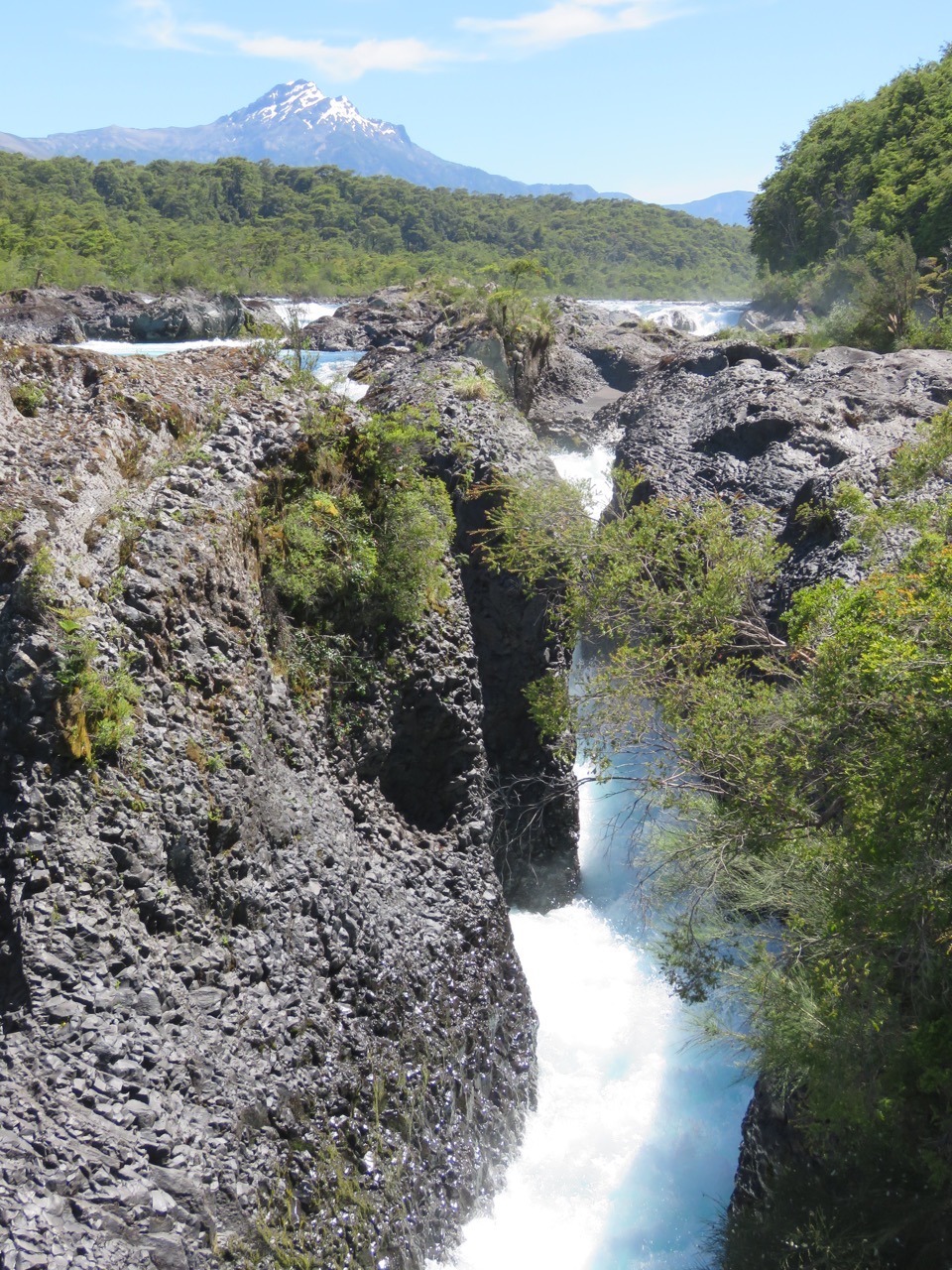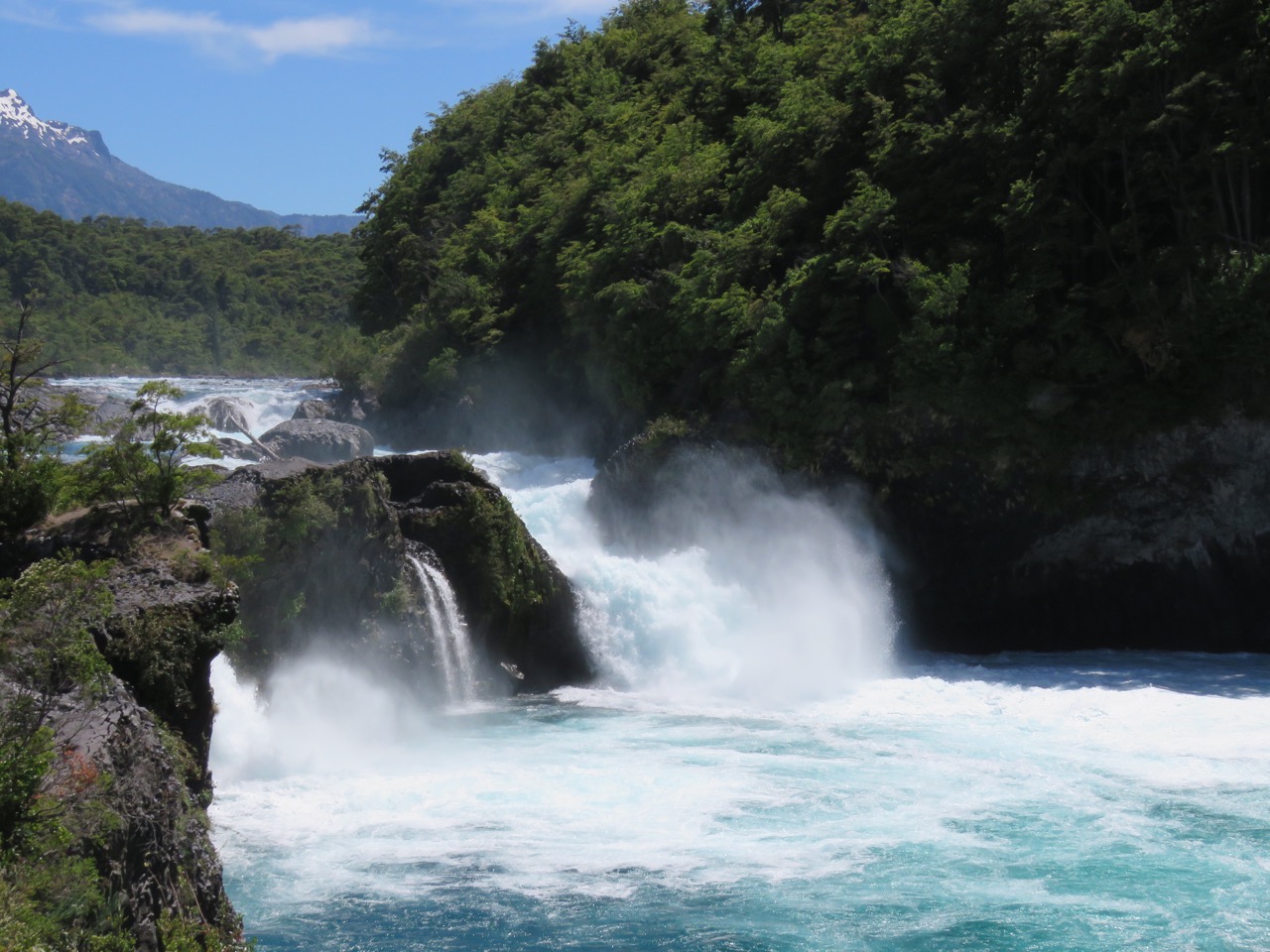Sometimes things turn out much better than you expect. Of all the stops on this ship’s itinerary, Puerto Montt seemed the least interesting to me. John and I had spent time in this part of Chile before, and while we enjoyed it then, as I looked over the different tours offered by this ship and those I could find on TripAdvisor or Viator, I thought, “Been there. Seen that.” So I picked one which offered as part of the package a boat trip on Lago Todos Los Santos as that was something I had not done before. So my expectations for the day were quite modest. Despite that, John and I had a pretty good time.
First a little about the area we visited. Tourist guides call this area the “Lake District” as a comparison to the area in the north of England. The Chilean government to it simply as the “Zona Sur.” In this case, though, not only is the tourist designation more poetic, it is also more accurate. The defining characteristic of this part of Chile are the many large lakes that cover the region. Here is a screenshot from Google Maps.

The other thing that defines this region are the large number of volcanoes here. You can the two largest ones on the map, but there are many small ones, both dormant and extinct. The combination of the volcanic eruptions and the effects of glaciation have shaped the land into its present form.
The day started out cloudy and overcast, though we did have a little sun breaking through as a promise of better weather to come.
I had a short workout in the gym, and we had breakfast in our room. At quarter of eight, we were in the lounge awaiting transportation information. The piers at Puerto Montt are not large enough to fit a ship as enormous as the Norwegian Sun, so we had to take small boats from ship to shore. The correct nautical term for the shuttles is “tenders.” The M/S Sun uses some of its lifeboats as tenders. I took a pictures of them lowering them down in the morning.
After we landed in Puerto Montt, we went to our assigned bus. John cringed when he saw a dozen big busses lined up to take the cruise ship passengers. We have always thought of ourselves as more independent travelers and been rather snobbish about those people on big package tours. Now we were those people. But we like the guide right away. He was an older gentleman named Pablo who spoke good English and knew a lot about the area. He kept up a pretty steady patter of facts as we drove through Puerto Montt.
Nobody spends any more time in Puerto Montt than they have to en route to either the Lake District to the north or to Chiloe and the ice fields to the south. It is a city without much history, though there was half-hearted effort to create a central plaza amid the many commercial blocks of downtown.
I took this picture through the bus windows as we never bothered to stop here. It is about thirty minutes or so from Puerto Montt to Puerto Varas. As Pablo explained to us, we would be coming back to Puerto Varas for lunch and for some free time in the afternoon. I was pleased by that because I had pleasant memories of staying in the town on our last trip.
We drove along the edge of Lake Llanquihue. The Chileans pronounce this sort like “zhan QUEE way”. Like a number of the place names around here, it reflects the influence of the Mapuche, the indigenous people of this area. This is the largest of the lakes and there are a number of towns around its edge. As we drove through the pastoral countryside, we caught glimpses of the snow-capped Volcan Osorno whose 8000 foot peak dominates the region.
Osorno is a favorite ski spot for Chileans, and when John and I had been here before we had taken the ski lift up to where there was still some snow.
The bus took us to Lago Todos los Santos, also known as Emerald Lake. The All Saints name apparently was given to it because the Jesuits had discovered it on All Saints’ Day. Here we left the bus and walked to a waiting boat. Pablo kept referring to it as a “catamaran” though it hardly looked like what I would call a catamaran. It just looked like a small ferry.
John and I found some seats on the upper deck and placed our coats there. We then walked around as the boat took off.
From the boat, we had more great view of the volcano.
We had a very pleasant time riding around the lake. At one point the captain pointed out Tronador, one of the highest Andean peaks in the distance. He explained that it is almost never visible and congratulated us on being here on such a marvelously clear day.
Our next stop was Petrohue Falls in the Vincente Perez Rosales National Park. John and I had been here before. In fact, we had done a white-water rafting trip on the Petrohue River. My most vivid memory of that day had been the biggest and most menacing flies I had ever seen in my entire life. Fortunately, I did not come across more than a couple of them on today’s trip. The falls are really not particularly high. It is just interesting to see the river coming through a landscape fairly recently shaped by volcanic activity.
And Osorno is always in sight looking rather like Mount Fuji.
Alas, there were no shortage of tourists admiring the scenery.
But this tourist is my favorite one.
And then there was this guy. I saw him all day taking pictures of his bear in front of different scenic views.
We walked about for a bit, and I think had we had more time I would like to have seen more of the park.
From the falls, we went into Puerto Varas. By an incredible coincidence, our lunch here was exactly at the hotel where John and I had stayed ten years ago. We watched fireworks over the lake from our bedroom window.
While the exterior of the building is fairly anodyne, the interior is quite stylish. The meal was pretty ho-hum, though we enjoyed talking to some of our fellow travelers. After lunch, we had a hour or so to explore Puerto Varas on our own.
Puerto Varas is a prosperous little city and has been for many decades. In the middle of the nineteenth century, the Chilean government recruited German settlers to homestead in the Lake District. The German influence remains quite strong in this region. There are private high schools where much of the instruction is still in German, and there are innumerable German social clubs.
The Catholic Church in Puerto Varas looks more like it belongs in Bavaria.
The bus took as back to the trip. There was a miserably long line for the tenders, and John’s foot throbbed while standing in line.
Tomorrow, Christmas Day, we explore a whole new area of Chile for us.

















